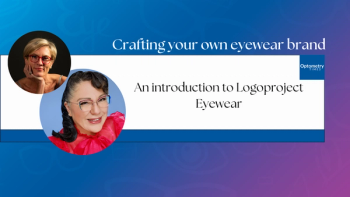
Bausch + Lomb launches Zenlens Chroma HOA scleral lens in US
Bausch + Lomb’s propriety Zenlens technology, which includes SmartCurve and Bi-Elevation, apply custom HOA correction to the lens to reduce visual disturbance, blurring, and distortion.
Bausch + Lomb has officially launched its Zenlens Chroma HOA scleral contact lenses in the United States. These lenses are designed to correct higher-order aberrations (HOA) using custom, wavefront-guided scleral lens technology that reduces symptoms such as hallows and glare to improve clarity and enhance vision.
“Zenlens Chroma HOA is a high-quality, customizable lens that fills a critical gap in scleral lens vision correction, especially for patients with complex corneal irregularities,” Yang Yang, president of global vision care at Bausch + Lomb, said in a press release. “Eye care professionals in the U.S. now have a new solution for patients that previously had limited options to improve vision quality.”
HOAs are complex irregularities in the lens or cornea that result from a variety of causes, such as irregular corneal shape, large pupils, scarring, previous eye surgeries, corneal dystrophy, keratoconus, and other medical conditions affecting the eye. As patients age, they may experience HOAs due to changes to the eye’s internal structures. Common symptoms include blurred vision, halos, glare, and difficulty seeing in low light conditions.
After the optometrist finds a secure scleral lens fit for the patient experiencing HOAs, Bausch + Lomb’s proprietary Zenlens technology, which includes SmartCurve and Bi-Elevation, applies custom HOA correction to the lens to reduce visual disturbance, blurring, and distortion.
“For years, I’ve had patients who struggle with visual distortions caused by higher-order aberrations, and there was little I could do beyond basic correction,” Jason Jedlicka, OD, chief of cornea and contact lens service and clinical professor at Indiana University School of Optometry, said in a press release. “With Zenlens Chroma HOA, I can offer a level of precision that wasn’t previously possible, and my patients can experience sharper vision and improved clarity, which has a significant impact on their quality of life.”
To support the US launch of Zenlens Chroma HOA, Bausch + Lomb is collaborating with Advance Medical and OVITZ for smoother implementation into practice workflows. OVITZ is providing its xwave aberrometer for precise HOA correction, and Advance Medical’s FocalPoints software platform supports seamless production of the Zenlens Chroma HOA design. The collaboration will ease custom lens production.
To learn more about Zenlens Chroma HOA, visit
From the manufacturer: Important safety information for gas permeable and customized soft contact lenses
Warnings:
- Problems with contact lenses and lens care products could result in serious injury to the eye. It is essential that patients follow their eyecare practitioner’s directions and all labeling instructions for proper use of lenses and lens care products, including the lens case. Eye problems, including corneal ulcers, can develop rapidly and lead to loss of vision.
- Daily wear lenses are not indicated for overnight wear, and patients should be instructed not to wear lenses while sleeping. Clinical studies have shown that the risk of serious adverse reactions is increased when daily wear lenses are worn overnight.
- Studies have shown that contact lens wearers who are smokers have a higher incidence of adverse reactions than nonsmokers.
- If a patient experiences eye discomfort, excessive tearing, vision changes, or redness of the eye, the patient should be instructed to immediately remove lenses and promptly contact his or her eyecare practitioner.
Contraindications:
- Acute or subacute inflammation or infection of the anterior chamber of the eye.
- Any eye disease, injury or abnormality, other than keratoconus, PMD, that affects the cornea, conjunctiva or eyelids
- Severe insufficiency of lacrimal secretion (dry eye)
- Corneal hypoesthesia (reduced sensitivity), if not aphakic
- Any systemic disease that may affect the eye or be exaggerated by wearing contact lenses
- Allergic reactions of ocular surfaces or adnexa that may be induced or exaggerated by wearing contact lenses or using contact lens solutions
- Allergy to any ingredient in a solution which is to be used to care for contact lenses
- Any active corneal infection (bacterial, fungal or viral)
- Red or irritated eyes
Adverse effects:
- Eyes stinging, burning, itching, irritation or other eye pain
- Comfort is less than when the lens was first placed on the eye
- Feeling of something in the eye such as a foreign body, scratched area
- Excessive watering (tearing) of the eye
- Unusual eye secretions
- Redness of the eyes
- Reduced sharpness of vision (poor visual acuity)
- Blurred vision, rainbows, or halos around objects
- Sensitivity to light (photophobia)
- Dry eyes
Reference
Bausch + Lomb Launches Zenlens® CHROMA HOA™ in the United States. Bausch + Lomb. Press release. Published May 14, 2025. Accessed May 14, 2025.
Newsletter
Want more insights like this? Subscribe to Optometry Times and get clinical pearls and practice tips delivered straight to your inbox.















































.png)


